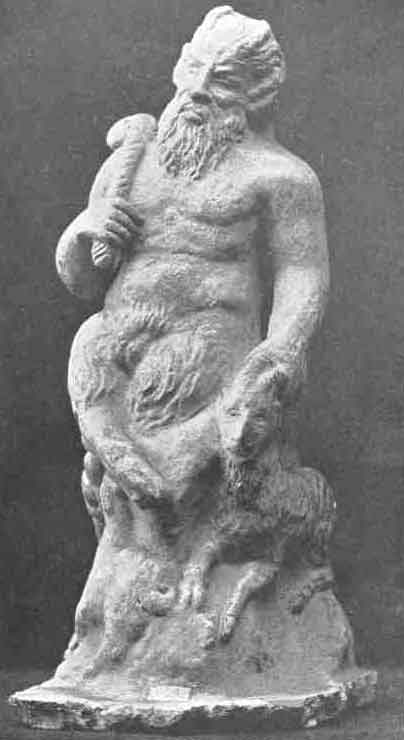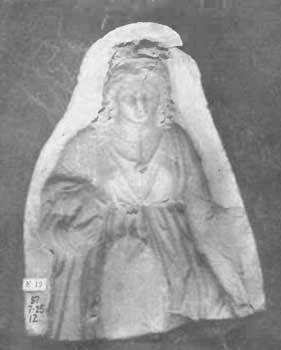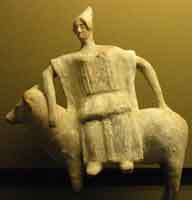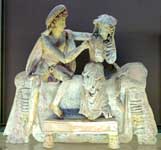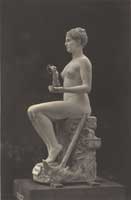|
|
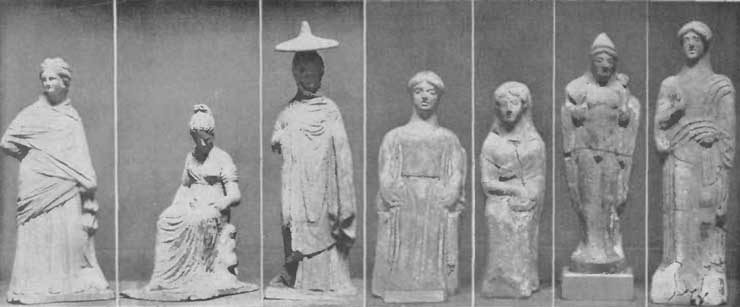 Terracotta figurines : 1-3 from Tanagra 3rd century BC, 4-7 Rhodes and Sicily archaic period Terra cotta is a hard semifired waterproof ceramic clay used in pottery and building construction. The term is also used to refer to items made out of this material. The name is Italian for "baked earth". The Greek word was "ge opte" also "baked earth". Terra cotta has been used throughout history for sculpture and pottery, as well as bricks and roof shingles. In ancient times, the first clay sculptures were dried (baked) in the sun after being formed. Later, they were placed in the ashes of open hearths to harden, and finally kilns were used, similar to those used for pottery today. Terra cotta usually has a brownish-orange color. In Ancient Greece Terra cotta (Tanagra ) figurines were produced mainly around 340-200 BC (not only in Tanagra but also in other places such as Athens). They were discovered around 1870. Terracotta was used also for roof tiles such as in the Heraion. Terracota figures were found in Crete, Melos, Rhodes and other places. Terracota figures were also produced by the Etruscans. According to Pliny they learned the technique from Corinthian colonists in the 7th century BC
Pan with Goat and Shepherd's Crook. Terra cotta Statuette from Tanagra, in the British Museum Significant uses of terra cotta have included the Terracotta Army of China, built in 210-–209 BC. The term terra cotta also denotes a brownish orange color.
Mould for a Terracotta figurine from Tarentum Terracorra figurines from the Louvre (and other Museums)
Retrieved from "http://en.wikipedia.org/"
 |
|
||||||||||||||||||||||||||
